#san giovanni abbey
Text

The screenplay of the film Joachim and the Apocalypse triumphs in England
The film draws inspiration from the apocalypse described by Calabrian biblical exegete Joachim of Fiore, who lived in the Middle Ages. Produced by Delta Star Pictures, it won the Best Historical Screenplay award at The Best Script Award ceremony that took place in London last week.

Out of more than 450 competing scripts for the 2024 edition, the script for the film "Joachim and the Apocalypse", produced by Delta Star Pictures won the Best Historical Screenplay award. In addition to the work of writer Michela Albanese and director Jordan River, historical scholars Valeria De Fraja and renowned philosopher Andrea Tagliapietra contributed as historical consultants.

The project also received valuable support from numerous renowned figures and cultural organizations. Supported by the Ministry of Culture, the Calabria Film Commission Foundation, and various other institutions, the film draws inspiration from the apocalypse described by Calabrian biblical exegete Joachim of Fiore, who lived in the Middle Ages.
The film was also shot in various areas of Calabria.

Joachim of Fiore, (c. 1135 – 30 March 1202), was a Christian theologian, Catholic abbot, and the founder of the monastic order of San Giovanni in Fiore. According to theologian Bernard McGinn, "Joachim of Fiore is the most important apocalyptic thinker of the whole medieval period."
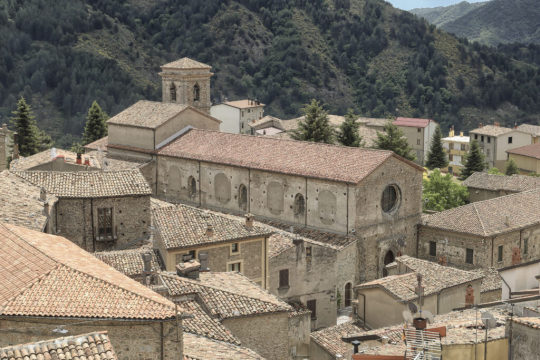
Set in the 1200s, the narrative unfolds on multiple levels: a historical one, based on real events, and a fantasy one, derived from metaphysical states such as the dream dimension, as well as ecstasy and the journey through the three realms of Dante's imaginary, namely Inferno, Purgatory, and Paradise.
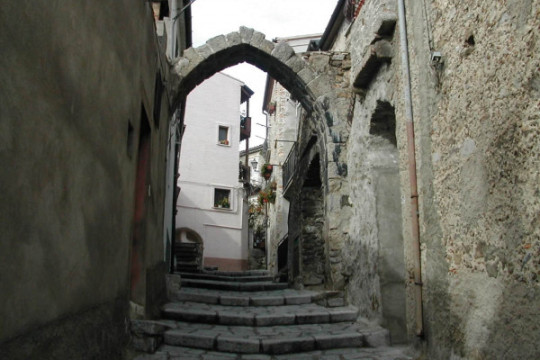
It tells the story of a monk who transformed some of his visions into images (figurae) and symbols, encapsulating them in the Liber Figurarum.
This ancient medieval illuminated manuscript has survived over 800 years up to the present day, with one of the three existing copies currently preserved in England, at Oxford.
The international release of the film is scheduled around the end of 2024 and the turn of the upcoming jubilee year.
Follow us on Instagram, @calabria_mediterranea
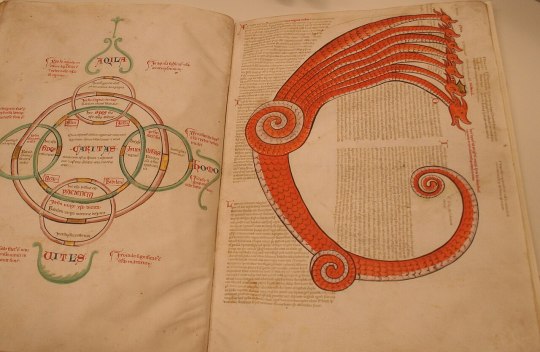
#joachim of fiore#joachim#cinema#calabria#san giovanni in fiore#south italy#southern italy#history#architecture#religion#abbey#monk#2024#mediterranean#actor#actors#fabrizio turbanti#coming soon#apocalypse#13th century#medieval#middle ages#philosophy#theology#christian#catholic#catholicism#catholic imagery#gioacchino da fiore
4 notes
·
View notes
Photo

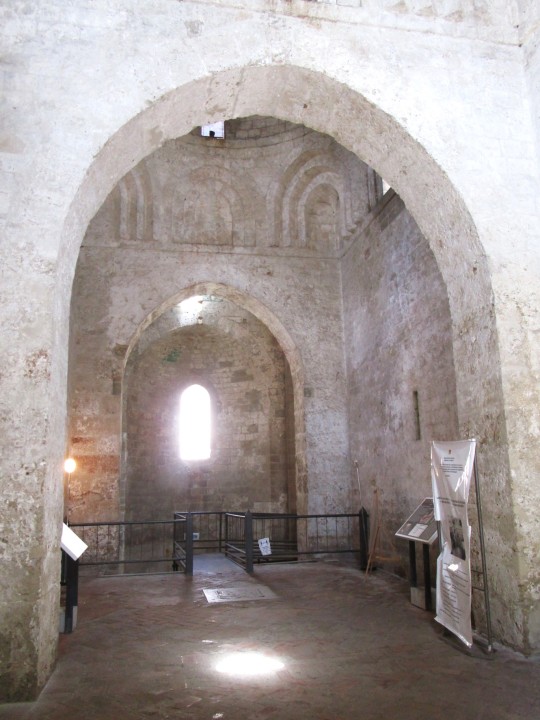


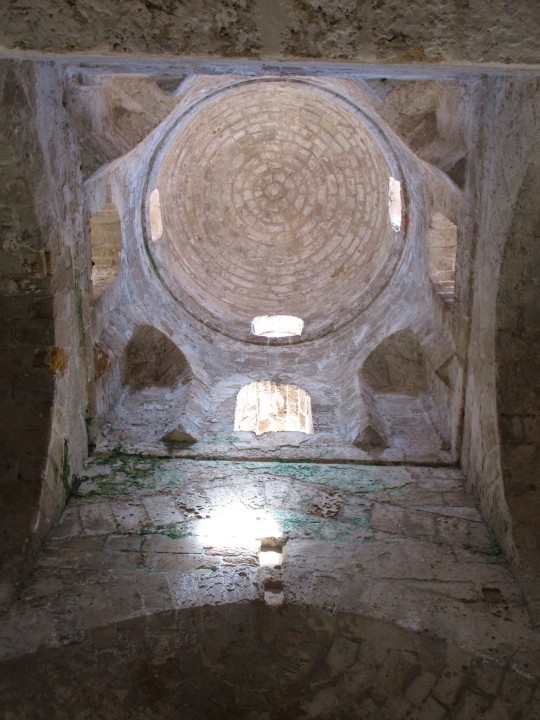
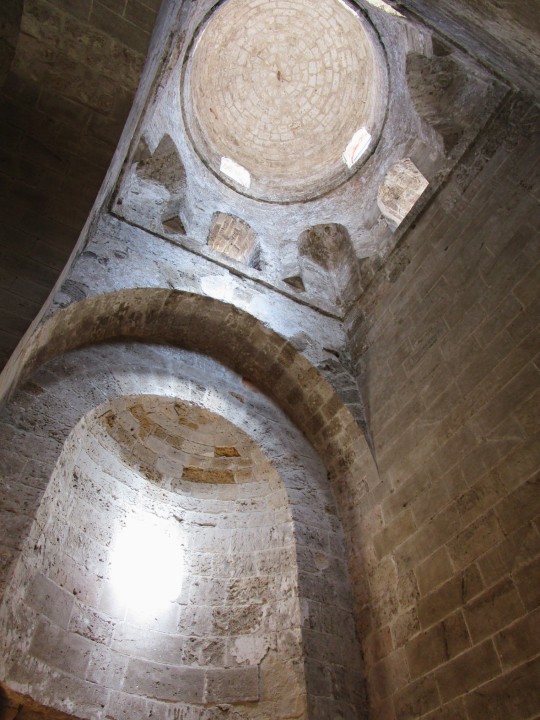
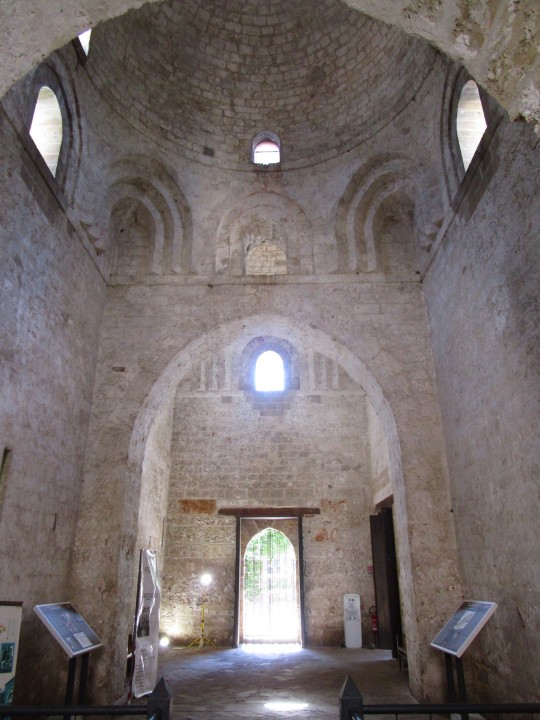

San Giovanni degli Eremiti (St John of the Hermits) - Palermo, Sicily
This Arab-Norman abbey church was built in the 12th century to re-establish a Benedictine monastery that had existed at the site from the 5th century until the Saracens invaded Sicily in the 9th century. After many alterations it was restored to its medieval appearance in the 19th century.
Photos by Charles Reeza
36 notes
·
View notes
Text
SAINT OF THE DAY (December 19)
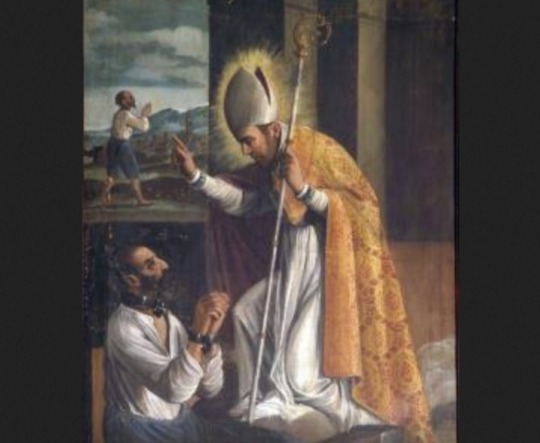
St. Berardo Valeara of Teramo OSB (c. 1050 - 1122)
Saint Berardo was born into the noble family da Pagliara, whose castle bore their name near the town of Isola del Gran Sasso in the Abruzzo region of Italy.
Important information concerning his life is found in the ancient church records from this area as well as the chronicles of his successor, the Bishop Sassone.
Saint Berardo entered the monastery in Montecassino as a young man and was later associated with the Abbey of San Giovanni in Venere.
He became well known for his good works, and upon the death of the Bishop Uberto, Berardo was asked to become a pastor in the territory of Teramo.
He took on this role for seven years beginning in 1116 and focused his efforts on helping the poor and making peace amongst the warring factions of the local citizenry.
He died on 19 December 1122 of natural causes.
He was buried in what today is known as Saint Anne’s chapel in the ancient Teramo Cathedral of Santa Maria Aprutiensis (now Sant’Anna dei Pompetti).
6 notes
·
View notes
Text

THE DESCRIPTION OF SAINT THOMAS AQUINAS
The Dominican Angelic Doctor
Feast Day: January 28
"Beware the man of a single book."
One of the great Christian theologians, Dominican priest, and later Doctor of the Church, was born Tommaso d'Aquino in circa 1225 in the Kingdom of Sicily at Roccasecca, a town and comune in the Province of Frosinone in the region of Lazlo (present-day Lazio, Italy), in the castle of his father, Landulf of Aquino. He was born to the most powerful branch of the family, and Landulf of Aquino was a man of means. Thomas's mother, Theodora, belonged to the Rossi branch of the Neapolitan Caracciolo family.
Thomas made the first schooling in the Benedictine monastery of Monte Cassino, and his higher studies at the University of Naples (University of Naples Federico II). There, he was attracted by the Dominicans (Order of Preachers), and, at the age of 19, he took the Dominican habit.
Landulf and Theodora, his parents, who wanted him to join the Benedictines, were angered by his decision and brought him back by force as the prisoner in his castle of Monte San Giovanni Campano. Thomas was held prisoner for almost one year in the family castles at Monte San Giovanni and Roccasecca in an attempt to prevent him from assuming the Dominican habit and to push him into renouncing his new aspiration. In order to undermine his vocation, his brothers introduced a woman into his cell, but Thomas seized a burning brand from the fire and chased her away. After two years of captivity, his family gave in and permitted him to return to his Order.
In 1245, Thomas was sent to Parish to study at the Faculty of the Arts at the University of Paris under Albertus Magnus (Albert the Great). Because of his bulky figure and silence, he was nicknamed, the 'Dumb Ox'. Albert rebuked his companions and said: 'You may call him the dumb ox; but I tell you, that he will make his voice heard to the farthest parts of the earth.'
After securing his master's degree in theology, Thomas lectured and preached in many places very successfully, giving the example of wisdom, prayer and humility. He declared that he had learnt more at the foot of the crucifix than from books. About the year 1266, he began Summa Theologica (Summary of Theology), which is considered to be the theological book ever written.
One day, a voice from the crucifix of the altar said to him: 'You have written well of me, Thomas. What reward would you like to have?' To which Thomas answered: 'Nothing but yourself, Lord.'
Thomas spent many hours of the day in prayer, and often times he fell into ecstasy. On December 6th, the feast of St. Nicholas, in the year 1271, he was celebrating Mass when he received a revelation from heaven. Afterwards, he wrote no more and said to his brothers: 'The end of my labors has come. All that I have written appears to be as straw after the things that have been revealed to me.'
Pope Gregory X convened the Second Council of Lyon and summoned Thomas to attend, until he fell seriously sick and took refuge at the Fossanova Abbey, which is operated by the Cistercians, where he received the last sacraments. Upon receiving Holy Communion, he said: 'I am receiving you, prince of my soul's redemption. All my studies, my vigils, and my labors have been for love of you.'
Two days later on March 7, 1274, while giving commentary on the Song of Songs, Thomas passed away, being only 49 years of age.
Thomas is canonized as a saint by Pope John XXII in Avignon on July 18, 1323 and declared Doctor of the Church by Pope St. Pius V two centuries later in 1567. Thomas had the honor of having his Summa Theologiae placed on the altar alongside the Bible and the Decretals at the Council of Trent. His major shrine can be found at the Church of the Jacobins in Toulouse, France.
#random stuff#catholic#catholic saints#dominicans#order of preachers#thomas aquinas#tomas aquino#doctor of the church
0 notes
Text
La Spezia, Italy
In the area of Liguria in Italy you will certainly find the community of La Spezia. This town is one of the 4 districts that you will certainly be able to find in Liguria. As you come closer to the town you will locate the close-by sea, the town as well as the hills which are virtually next to the town give you with a stunning welcome right into the city. Upon entering this city you will see many bergamotto trees as well as elegant yards with fascinating and unique plants which are well kept. These gardens add a sprinkle of colour to the surrounding area. Surprisingly you will locate that the people who live in this town are known as Spezzini.
There are numerous interesting shops, dining establishments and resorts where you will have the ability to pass your time away while you remain in La Spezia. These facilities will certainly maintain you occupied in between the moments when you are not sightseeing and tour. The different taking in the sights locations you will certainly travel to will make your time below much more remarkable as you will have the ability to see areas like the Castle of San Giorgio. This castle has just recently been restored to practically its former magnificence.
Albergo economico la spezia
In all likelihood the Castle of San Giorgio was possibly made use of as a watchtower. The first castle was built on this area in 1262 by Niccolò Fieschi. The Genoese military damaged the castle in 1273, nevertheless when all indicators of battle had finished the castle was restored in 1371 by the podesteria of La Spezia. When the Republic of Genoa was annexed to the area of La Spezia, they chose to add a new castle to the existing one. This new castle addition was started in 1607.
From the Castle of San Giorgio you might intend to switch over gears and also visit the Santi Giovanni e Agostino church. The name of this church in English implies Saints John as well as Augustine. You will locate this church was developed during the 16th century and it has a solitary nave which has 18th and 19th century decors to it. One more church that you might wish to see in La Spezia is that of the Abbey church of Santa Maria Assunta understood in English as Our Lady of the Assumption.
Hotel autostrada A12 A15 La Spezia
This abbey was built in the 13th century. The abbey is home to a number of art work, some of which arrived below seeking shelter from other religious institutes which were being suppressed. Of these numerous artworks you can see ones like St Bartholomew's Affliction by Luca Cambiaso, the Incoronation of the Virgin by Andrea della Robbia and the Reproduction of Bread by Giovanni Battista Casoni.
As you will discover when you concern La Spezia there is lots to see and do below. These are simply a few of the many sights that you can experience on your own. There are many others like the Ubaldo Formentini which is the Civic Museum discovered in the Castle of San Giorgio, the Palazzina delle Arti as well as Gallery of Seals, the Ethnographic Civic Gallery, and Art Nouveau styled villas which can be located in La Spezia. For every one of these factors as well as the many various other thrills you will locate in La Spezia do come as well as invest your following trip in La Spezia, Italy.
0 notes
Photo

Ma andate a letto, grulli, due volte sono infilato in casa delle gente, non usano le tazzine, perché poi c’è da lavarle, cazzatine confezionate e oggi hanno fatto l’acqua di San Giovanni! Ma ripigliatevi! (presso Carfax Abbey) https://www.instagram.com/p/CfL5oGVs52jViXzhBeOrDIRpTmROmJZTc1ppoo0/?igshid=NGJjMDIxMWI=
0 notes
Text
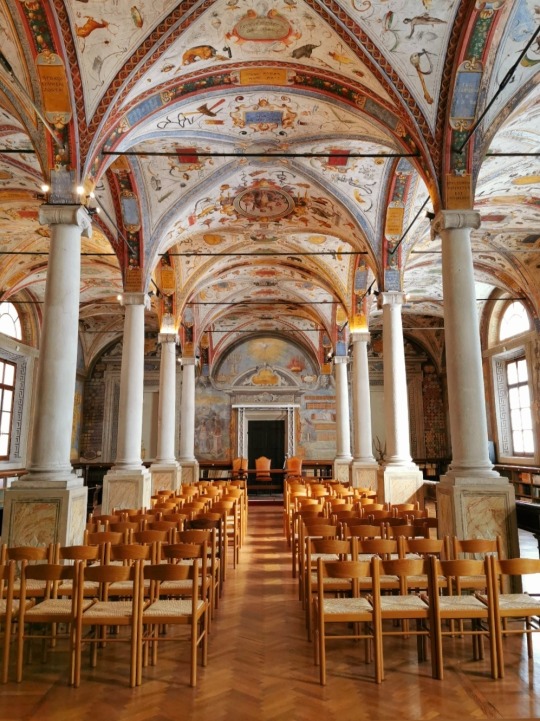
A painter paints pictures on canvas. But musicians paint their pictures on silence.
// Leopold Stokowski
(in the library of San Giovanni Evangelista Abbey, Parma, Italy)
#parma#library#san giovanni abbey#music#travel photography#silence#leopold stokowski#quote#q#painting#interiors#beauty#photography#ph#abbey#san giovanni evangelista
138 notes
·
View notes
Text
St. Thomas Aquinas - The Angelic Doctor

Thomas is believed to have been born in the castle of Roccasecca in the old county of the Kingdom of Sicily, which is now known as the Lazio region of Italy, in 1225. His parents were well-off, but as the youngest son Thomas was expected to enter the monastery.
At 5-years-old, Thomas began his education at Monte Cassino, where he remained until the military conflict between Emperor Frederick II and Pope Gregory IX reached the abbey. He was then transferred and enrolled at the studium generale in Naples.
It is believed that Thomas was introduced to his philosophical influences - Aristotle, Averroes, and Maimonides - at the university, where he also met John of St. Julian, a Dominican preacher, who influenced him to join the recently founded Dominican Order.
When Thomas' family learned of his decision, his mother Theodora arranged for him to be moved to Paris. When Thomas was travelling to Rome, his brothers captured him and returned him to their parents at the castle of Monte San Giovanni Campano.
Thomas was held captive in the castle for one year as his family tried to keep him from joining the Dominican Order. In the year he was held, Thomas tutored his sisters and communicated with members of the Dominican Order.

In an effort to change Thomas' mind, two of his brothers hired a prostitute to seduce him, but legends claim Thomas drove her off with a fire iron. That night, two angels appeared to him in a dream and strengthened his resolve to remain celibate.
When Theodora realized she could not sway her son, she tried to preserve the family name by arranging for his escape through a window. She believed a secret escape was better than appearing to accept his decision.
Following his escape in 1244, Thomas turned to Naples, then to Rome and met the Master General of the Dominical Order, Johannes von Wildeshausen.
The next year, Thomas went to study at the Faculty of the Arts at the University of Paris, where he is believed to have met Dominican scholar Albertus Mangus, the Chair of Theology at the College of St. James.
In 1248, Thomas chose to follow Mangus to the new studium generale at Cologne rather than accepting Pope Innocent IV's offer to appoint him abbot of Monte Cassino as a Dominican. Though Thomas hesitated, when they reached the university, Mangus appointed him magister studentium.
Thomas was quiet and seldom spoke at the university, leading other students to believe he was mentally delayed, but Mangus prophetically said, "You call him the dumb ox, but in his teaching, he will one day produce such a bellowing that it will be heard throughout the world."
Following the conclusion of his education, Thomas taught in Cologne as an apprentice professor and instructed students on the books of the Old Testament. It was during this time he wrote Expositio super Isaiam ad litteram, Postilla super Ieremiam, and Postilla super Threnos.
In 1252, Thomas returned to Paris to earn his master's degree in theology. As an apprentice professor, he lectured on the Bible and devoted his final three years of his education to Peter Lombard's Sentences.
Thomas composed a commentary on Sentences, titled Scriptum super libros Sententiarium and wrote De ente et essentia.
The spring of 1256 saw Thomas appointed regent master in theology at Paris, and one of his first works after assuming the office was Contra impugnantes Dei cultum et religionem, in defense of mendicant orders, which William of Saint-Amour had been attacking.
Between 1256 to 1259, Thomas spent his tenure writing several books, such as Questiones disputatae de veritate, Quaestiones quodlibetales, Expositio super librum Boethii De trinitate, and Expositio super librum Boethii De hebdomadibus. At the conclusion of his regency, Thomas was in the process of writing one of his most famous works, Summa contra Gentiles.
In 1259, Thomas completed his first regency and returned to Naples, where he was appointed general preacher. In September 1261, he was asked to lecture in Orvieto, and during his stay he finished Summa contra Gentiles, as well as Catena aurea, and Contra errores graecorum.
In 1265, Thomas was summoned to Rome to serve as the papal theologian and was later ordered by the Dominican Chapter of Agnani to teach at the studium conventuale, which was the first school to teach the full range of philosophical subjects of both moral and natural natures.

While teaching, Thomas wrote his most famous work, Summa theologiae, which he believed was particularly useful to beginning students "because a doctor of Catholic truth ought not only to teach the proficient, but to him pertains also to instruct beginners."
He continued to write and released several more books until 1268, when he was called to Paris for a second teaching regency. He was named regent master again and stayed until 1272. During this time, he wrote De virtutibus and De aeternitate mundi.
At the conclusion of his regency, the Dominicans called Thomas to establish a university wherever he wanted with a staff of whomever he wished. He established the university in Naples and took the regent master post. In 1273 Thomas was seen by the sacristan Domenic of Caserta to be crying and levitating in prayer before an icon of the crucified Christ at the Dominican convent of Naples, in the Chapel of Saint Nicholas.
During this prayer, Christ is said to have told him, "You have written well of me, Thomas. What reward would you have for your labor?"
Thomas replied, "Nothing but you, Lord."
Following this exchange, something happened but Thomas never wrote or spoke of it. He abandoned his routine and, when begged to return to work, replied, "I cannot, because all that I have written seems like straw to me."
In May of 1274, Thomas was called to the Second Council of Lyon, where his works for Pope Urban IV would be presented. While journeying to the meeting, Thomas hit his head on the branch of a fallen tree and fell ill. He was escorted to Monte Cassino to recover, then he set out again.
Unfortunately, he became ill once again and stopped at the Cistercian Fossanova Abbey, where the monks cared for him for several days.
He received his last rites and prayed, "I receive Thee, ransom of my soul. For love of Thee have I studied and kept vigil, toiled, preached and taught..."
Thomas died on March 7, 1274 during a commentary on the Song of Songs. Thomas' remains were placed in the Church of the Jacobins in Toulouse on January 28, 1369.
It is not known who beatified Thomas, but on July 18, 1323, Pope John XXII canonized him.
His original feast day was March 7, the day of his death, but because the date often falls within Lent, in 1969, a revision of the Roman Calendar changed his feast day to January 28, the date his relics were moved to Toulouse. Pope Pius V declared Saint Thomas a doctor of the church, saying Thomas was "the most brilliant light of the Church."
Saint Thomas' remains were moved to the Basilique de Sant-Sernin, Toulouse between 1789 and 1974. They were then returned to the Church of the Jacobins.
In the 16th century, the university in Paris, that Thomas often taught at, was renamed the College of Saint Thomas, and in the 20th century it was relocated to the convent of Saints Dominic and Sixtus before being transformed into the Pontifical University of Saint Thomas Aquinas.
Saint Thomas' comments and philosophical writings are still debated today, and his aesthetic theories, such as the concept of claritas, deeply influenced the literary writings of James Joyce and Italian semiotician Umberto Eco. Saint Thomas is often depicted with an open book or writing with a quill.
https://www.catholic.org/saints/saint.php?saint_id=2530
42 notes
·
View notes
Text
HalloWeek, Italian mysteries: day 7, evil lurks in Lucedio

(image source: agfa the frog, Flickr)
In the early decades of the 12th century several Cistercian monks, who came from the monastery of La Ferté a Chalon˗sur-Saône, erected an imposing abbey complex on a lot of marshland owned by the Marquis Ranieri I of Monferrato.
The Principality of Lucedio came to life seven hundred years later, when the area around Trino (Vercelli) was sectioned into smaller territories and the Marquis Giovanni Gozzani of San Giorgio acquired the one where the Abbey of Saint Mary of Lucedio was located.
In 1861 he gifted the land to Duke Raffaele de Ferrari of Galliera, to whom the Savoy family granted the title of Prince.
Legend has it that the Church of Santa Maria was designed according to an architectural plan shaped as an inverted cross, with an unusual octagonal bell tower.
It is said that in 1684 an evil presence was evoked in the nearby cemetery of Darola. Whoever summoned the entity failed to control it and the monks living in the abbey soon fell victim to its malignant influence: they started dabbling in the dark arts, abusing the novices and torturing and killing innocent people.
To this day, in the main hall where the monks allegedly gathered to carry out black masses there’s one specific column known as the Column that cries.
According to local lore it sheds tears in remembrance of the victims of ritual sacrifices, even though the scientific explanation behind the phenomenon lies in the composition of both the stones used during the construction of the abbey and the soil: the area surrounding Lucedio is a textbook example of floodplain, rich in natural underground springs - water emerging from the ground can actually flow through certain kind of porous rocks, creating the illusion of a stone that “cries”.
Authentic documents of the time, though, report mentions of “fraternisation” between the monks and the nuns of the convent of Trino as well as desecration of graves in the cemetery of Darola, and they also hint to the existence of a not better identified dark cult practiced on the grounds of the abbey.
In 1784 Pope Pius VI drafted a papal bull ordering the immediate secularization of the abbey; the Pope also requested the intervention of an exorcist, who battled against the evil presence and created a containment circle positioning (now mummified) bodies inside the crypt, which was then walled up.
Later on, a piece of music was composed in order to keep the evil forces at bay: the Spartito del Diavolo (Devil’s sheet music) is said to have powerful esoteric properties, which can prevent the demon trapped inside the crypt from escaping.
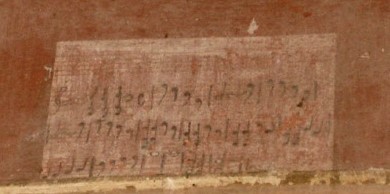
(image source: ilparanormale.com)
According to legend, playing the music score in reverse produces a melody that might set the demon free from its cage.
The sheet is painted in the deconsecrated church of the Madonna delle Vigne. In 1999 Dott.ssa Paola Briccarello extensively examined it and found out that the notes on the sheet, if replaced with letters from the alphabet through an encryption system, make three different words: DIO (God), FEDE (faith) and ABBAZIA (abbey).
Last, but not least, people living in Trino still report strange occurrences, such as a ghostly mist that inexplicably rises up and overtakes only the Principality and bell tower, mysterious figures moving around the cemetery of Darola at night and strange lights and sounds echoing in the dark, at odd times.
(original source: The “spartito del diavolo” and the mysteries that surround Lucedio Principality. Truth or legend?, Lo spartito del diavolo)
day 1
day 2
day 3
day 4
day 5
day 6
bonus
#spooktober#halloweek#hauntings in italy#made in italy#italian mysteries#italian ghost stories#lucedio#vercelli#demons
8 notes
·
View notes
Photo

The Sacra di San Michele, sometimes known as Saint Michael's Abbey, is a religious complex on Mount Pirchiriano, situated on the south side of the Val di Susa in the territory of the municipality of Sant'Ambrogio di Torino, in the Metropolitan City of Turin, Piedmont region of northwestern Italy. The abbey, which for much of its history was under Benedictine rule, is now entrusted to the Rosminians.
A special regional law acknowledges it as the "Symbolic monument of the Piedmont region". This monumental abbey served as one of the inspirations for the book The Name of the Rose by Umberto Eco.
According to some historians, in Roman times a military stronghold existed on the current location of the abbey, commanding the main road leading to Gaul from Italy. Later, after the fall of the Western Roman Empire, the Lombards built a fortress here against the Frankish invasions.
Little is known of the early years of the abbey. The oldest extant account is that of a monk, William, who lived here in the late 11th century and wrote a Chronicon Coenobii Sancti Michaelis de Clusa. He sets the foundation of the abbey in 966, but, in another passage, the same monk maintains that the construction began under the pontificate of Sylvester II (999-1003).
What is certain is that what is now the crypt was built in the late 10th century, as attested by the Byzantine influence in the niches, columns and arches. According to tradition, this building was constructed by the hermit Saint Giovanni Vincenzo, at the behest of the archangel Michael to whom he was particularly devoted; and the building materials which the hermit had collected were transported miraculously to the top of the mountain. In addition, it is noted that the cult of St. Michael, the archangel who warred with Lucifer, typically bases its churches on pinnacles or hard to reach places, for example, Mont Saint-Michel in France.
In the following years a small edifice was added, which could house a small community of monks and some pilgrims.
Later the abbey developed under the Benedictine rule, with the construction of a separate building with guest-rooms for pilgrims following the popular Via Francigena and of a church-monastery (1015–1035), probably on the remains of the ancient Roman castrum. During Easter in 1098, St Anselm, archbishop of Canterbury, visited the monastery to see his nephew Anselm, who was a brother here. The younger Anselm would go on to serve as abbot of St Saba in Rome and Bury St Edmunds in England. Abbot Ermengardo (1099–1131) had a new large, 26 m-high basement built from the foot of the hill to its peak, on which a new church (the one still existing today) was added, including the surrounding structures.
In the year 1315, the manuscript Breviary of San Michele della Chiusa was written containing the prayer cycle of the year for the monks of the Abbey.
The monastery fell into decline and was finally suppressed in 1622 by Pope Gregory XV. It remained abandoned until 1835, when King Charles Albert and the Pope asked Antonio Rosmini to restore and repopulate it. It is currently under the care of the Rosminians.
Daily inspiration. Discover more photos at http://justforbooks.tumblr.com
49 notes
·
View notes
Text

La Pietà, parte del monumento funebre a Maria Cristina di Sassonia
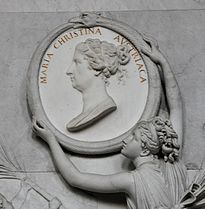
Ritratto di Maria Cristina di Sassonia. Antonio Canova, Parte del Monumento funebre di Maria Cristina di Sassonia

Antonio Canova, Le tre Grazie, 1815-1817. Marmo, altezza 167 cm. Wobum Abbey. Seconda versione de Le tre Grazie di San Pietroburgo.

Antonio Canova e Giovanni Antonio Selva, Tempio Canoviano, 1819-1833. Possagno

Antonio Canova. Monumento funebre agli Alfieri
Canova, che lavorò parecchio per Napoleone e la sua corte, realizzando ritratti come quello del Primo Console Bonaparte o quello di Paolina Borghese (1808, in cui la sorella di Napoleone viene raffigurata come Venere vincitrice, in un'inedita sintesi di riferimenti alla pittura giorgionesca, o tizianesca e alle figure giacenti di certi sarcofagi etruschi).
Nei medeisimi anni in cui celebrava illustri personalità della corte imperiale francese, lo scultore italiano, grazie all'indiscusso prestigio che, aveva conseguito, poteva lavorare anche per la corte asburgica, che gli commissionò il Monumento funerario di Maria Cristina di Sassonia Teschen (1798-1805) per la Chiesa Agostiniana di Vienna.
Canova affrontava di nuovo il tema del sepolcro offrendone una diversa interpretazione con il richiamo alla forma più elementare e antica del monumento funebre, la piramide, verso la cui porta si snoda in un immenso corteo costituito dalla Pietà, che reca l'urna con le ceneri della defunta, seguita da un gruppo di figure che rappresentano la Beneficenza.
Al lato opposto della piramide sta il Genio del Dolore un adolescente che ricorda quello del monumento a Clemente XIII, appoggiato al leone della Fortezza, mentre sopra la porta il ritratto di Maria Cristina incorniciato da un serpente che si morde la coda, emblema dell'immortalità, bensì, come il Foscolo dei Sepolcri, rappresenta un passaggio che, comunque interpretato a seconda delle varie mentalità e delle varie fedi, suscita infinita tristezza e nostalgia per la luce, la sola fervida consolazione della "corrispondenza di armoniasi sensi".
La duplice funzione del sepolcro - la possibilità di un legame duraturo tra i defunti e i rimasti e lo stimolo a "egregie cose", nel caso delle tombe dei grandi uomini - venne ripetutamente espressa dal Canova all'inizio dell'Ottocento, nei monumenti a due cari amici come Giovanni Falier (1806-1808 nella Chiesa di Santo Stefano a Venezia) e Giovanni Volpato (1807-1808 nella chiesa dei Santi Apostoli a Roma) e in tombe monumentali come quella per l'Alfieri in Santa Croce a Firenze (1806-1810).
Questo bisogno di sottrarsi all'azione devastatrice del tempo con la celebrazione dei valori dell'arte, evidente anche nel gruppo delle Grazie, celebrato dal Foscolo nel suo incompiuto poema, spiega l'importanza che assume, nella prospettiva canoviana, la costruzione di un Tempio nel suo paese natale, Possagno, creato tra il 1819 e il 1833, in collaborazione con Giovanni Antonio Selva. Un tempio cristiano dedicato alla Trinità, ma al tempo stesso di un sepolcro-sacrario, dove, nel 1830, vennero traslate le spoglie del Canova. Sul piano architettonico è un tentativo, di combinare la struttura con cupola tipica dell'antichità romana (il Pantheon con il tempio a colonne di origine greca il Partenone).
#Annalisa Lanci#Antonio Canova#arte storia#cultura#neoclassicismo#arte neoclassica#scultura neoclassica#buio e luce#luce#luce tra cielo e terra
3 notes
·
View notes
Text
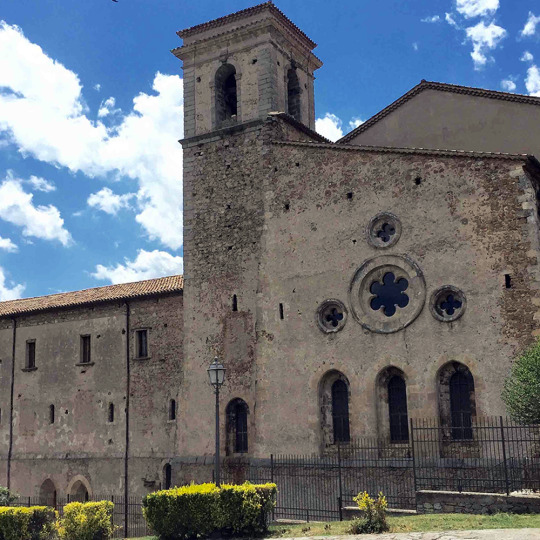



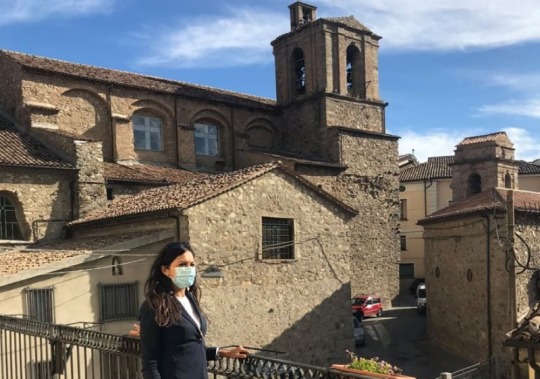
San Giovanni in Fiore, Calabria, Italy
San Giovanni in Fiore is a small medieval town in the Sila mountain range in Calabria, southern Italy.
Its history is bound with the one of Abbot Joachim of Flora, exegete monk of the XII century who founded here its congregation and the Abbey of San Giovanni in Fiore. The village took its name after the patron saint of the monastery.
According to theologian Bernard McGinn, "Joachim of Flora is the most important apocalyptic thinker of the whole medieval period".
The Florense Abbey, despite the numerous renovations, keeps the austere aspect of the Romanesque architecture: inside there is the crypt with Joachim of Flora’s tomb.
Follow us on Instagram, @calabria_mediterranea
#san giovanni in fiore#calabria#italy#italia#italian#south italy#southern italy#mediterranean#europe#landscape#italian landscape#italian landscapes#landscapes#town#mountains#sila#mountain#flowers#abbey#architecture#medieval#romanesque
73 notes
·
View notes
Photo

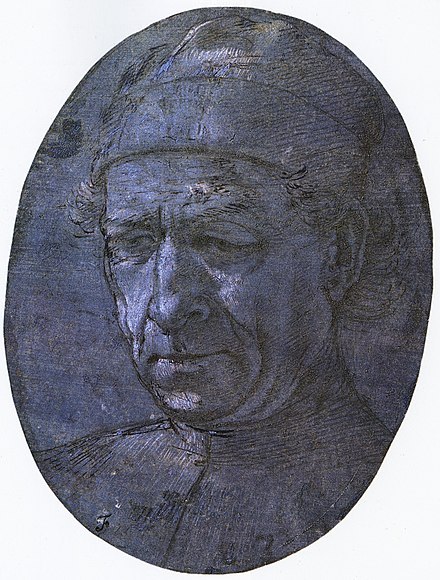

By Samantha Hughes-Johnson.
On this day (13 September) in 1470, the Badia of Florence acquired a new artwork by the Tuscan sculptor, Mino da Fiesole (Mino di Giovanni). Interestingly, this altar front was not commissioned by the monks of the abbey, rather it came to them by way of a deal that was made in order to save its creator from having to suffer financial loss because a client had defaulted on payment.
Mino had originally completed the sculpture for Deitisalvi Neroni, once a close confidant of Cosimo “il Vecchio” de’ Medici and Gonfaloniere di Giustizia (1454). However, Neroni’s involvement in the Pitti Conspiracy of 1466 (a coup against Piero “the Gouty” de’ Medici and the Florentine government) had ensured that he had swiftly become a persona non grata in Florence. Accordingly, Deitisalvi Neroni was sent into exile and Mino da Fiesole had a marble relief that needed to be paid for. This is where the Badia stepped in, paying Mino the money that he would have lost and gaining a sculpture of the Madonna and infant Christ, flanked by Saints Leonard and Lawrence.
The record of the transaction reads as follows:
In the name of God Amen. In the year of our redeemer’s incarnation 1470, September 13, in Florence, in the Piazza della Signoria, in the parish of San Piero Scheraggio, in the presence of ... witnesses...
Antonio, son of the late Michele da Rabatta, Florentine citizen, attorney, in the name of the attorney and of the creditors of Master Dietisalvi son of Dietisalvi, Florentine citizen, having heard certain judgement by the Court of Eight, by which they decided and gave permission to the monks of the Badia of Florence to take on deposit a panel of white stone, on which are carved the Virgin Mary with her son in her arms, St. Leonard and St. Lawrence with two little angels, which panel was made by Mino the son of Giovanni, sculptor, on order of Master Dietisalvi, son of Dietisalvi, and to lend 32 large florins on its security, which the said Mino said was the balance due to him, with this condition, that if at any time Antonio da Rabatta [and two others] attorneys of the creditors o the said Master Dietisalvi wish to get the said panel back, that the said monks are required to give back the same, receiving in return the said 32 florins...
The sculpture however, was never returned and remains in the Badia to this day.
Images: Mino da Fiesole, The Neroni Dossale, before 1470, marble, Badia Fiorentina, Florence.
Anonymous, Portrait of a Man Looking Down (Mino da Fiesole), 16th century, metalpoint highlighted with white gouache on blue/grey prepared paper, Chatsworth House, Derbyshire, United Kingdom.
Mino da Fiesole, Bust of Dietisalvi Neroni, 1464, marble, The Louvre, Paris.
References: Margery A. Ganz, “Acciaiuoli, Neroni and Medici Relationships in the 1460s.” In William J. Connell ed., Society and Individual in Renaissance Florence, London: University of California Press, 2002, pp. 155-172.
George R. Goldner, Carmen Bambach, The Drawings of Filippino Lippi and His Circle, New York: The Metropolitan Museum of Art, 1997.
Creighton E. Gilbert, Sources and Documents in the History of Art Series: Italian Art 1400-1500, ed. H. W. Janson, New Jersey: Prentice Hall, 1980, pp. 34-35.
24 notes
·
View notes
Photo

Italian Sketchbook, Sanford Robinson Gifford, 1867-1868, Brooklyn Museum: American Art
Bound sketchbook of 38 pages with drawings of Italian landscape subjects and one Catskills, New York subject. Sketchbook bound with cardboard covers lined with tan fabric. Front cover: inscribed in artist's hand, "Maggiore / Como / Sicily / Rome / Genoa / 1868"; inscribed in different hands, "Presented to Jervis McEntee by [Jas?] Gifford [?] Sanford / [?] January 25 1881." and "From Sara McEntee to Geo. H. Hall / in memory of her Brother [and?] Gifford / Sept. [6 or 8?]. 1892. Palenville" [Museum numbered recto and verso pages in succession. All drawings in graphite unless otherwise noted] Inside front cover: small landscape sketch, inscribed in artist's hand, "S R Gifford / Studio Building 51 West 10th. St / New York" p. 1: landscape sketch, inscribed lower left, "Da Civita Lavinia. Oct 30th." p. 2: very sketchy landscape p. 10: small, lightly sketched landscape in rectangle oriented vertically p. 11: (half page) small landscape sketch in rectangle oriented vertically p. 12: (half page) figures and tiny sketch of island with towers in rectangle p. 13: landscape with buildings, inscribed lower right, "Road to Subiaco. Oct 16th. 68." pp. 14-15: panoramic landscape, inscribed bottom of p. 15, "Highlands of Neversink. July 23 1867" p. 17: sketch of Louvre in Paris viewed through trees with carriages in foreground, oriented vertically, inscribed at binding on facing p. 16, "June '68-" p. 18: small landscape sketch (same scene as on facing p. 19) p. 19: landscape sketch in mountains with foreground figures, inscribed lower left, "Val d'Aosta" and "Cormayeur [Courmayeur] July 10 68" and color notations on landscape elements including "g. gray", "[PB?]", "GB" p. 21: sketch of mountain peak in graphite with touches of white wash or chalk, oriented vertically, inscribed lower left "x Glacier" and color notation "green" in foreground p. 22: light sketch of structure atop rocks, oriented vertically p. 23: loose sketch of mountain with cabin & figures in foreground, oriented vertically pp. 24-25: panoramic mountain landscape, inscribed p. 25 lower right, "Col de Monte Moro-" p. 26: loosely sketched mountains, oriented vertically, inscribed lower left, "Val Antasca" p. 27: sketch of mountaintop pp. 28-29: partial sketch of buildings and panorama of island fortress in lake, inscribed p. 29 lower right, "Isla San Julio. Lago d'Orta. Julio [20th or 21st]. 1868." pp. 30-31: vertical landscape sketch, inscribed below "Montenerone?" and horizontal sketch of lakeside town, inscribed bottom of p. 31 "Borgo d'Orta" pp. 32-33: from left to right, vertical sketch of town with boats, small landscape in rectangle, panoramic lakeside landscape, inscribed along bottom of p. 33 "Sassa di Calci. July 30' 68" "Monte Ferro. Laveno from Stresa." "Cesso" p. 34: sketch of boats, two sketches of abbey in rectangle (same motif as p. 35) p. 35: sketch of abbey, inscribed at bottom, "Santa Caterina. Miracolo San Alberto. July 31st 1868." p. 37: view of roof of cathedral, inscribed lower right, "Milan. / July 27th 68." pp. 38-39: panoramic landscape, inscribed p. 38 "Monte Rosa" and "Mischabel" and p. 39 "Sempioni from the Campo Santo of Laveno. July 31st 68." pp. 40-41: vertical sketch of palazzo and of boat and sculpture, inscribed "Rtop brown red. Chim grey + red / Water yel white. / Boats blk white + red + grey / [Curtains?] brown yel."; horizontal panorama of palazzo on lakeside with figures, inscribed bottom of p. 41 "Palanza [Pallanza]. Aug 1st 1868." pp. 42-43: vertical sketch of lakeside village, inscribed below "Vira- / near Magadino / Aug 2nd. 1868. / Yel cupola"; and horizontal landscape sketch across lake, inscribed along bottom of p. 43 "Oria-" "Sassa di Carsognia - / higher and narrower" "[Sommanetti?] - Lago di Lugano - Aug 3rd." pp. 44-45: vertical sketch of lake with boat and mountains, inscribed below "Aug 6th. Sassa di Carsognia"; horizontal landscape sketch, inscribed at bottom p. 45 "Lago di Lecco. Aug 6th 68." pp. 46-47: from left to right, vertical sketch of figures in tunnel through mountain, inscribed at bottom "water" [two times] and "Galleries of the Stelvio Rd / Lake Como. Aug '68"; view of lake; horizontal sketch of tunnel; sketch of lake and outline of buildings pp. 48-49: panoramic landscape with town on lake, inscribed lower right p. 49 "Lago di Como / da San Giovanni / agosto 7th. 1868." pp. 50-51: vertical sketches of tower on rocky coast, inscribed below "La Lanterna / at Genoa / Aug 14th 68" and color notations "tower yel / base + lower walls grey / lower bastion red / tower thicker."; sketch of bastion and sailboats with "sentry", "lower bastion" and "sea"; small sketch of tower in rectangle; loose outline of bastion pp. 52-53: sketch of lakeside town, inscribed at bottom of p. 53 "Genoa. Aug 15th. 68." and artist's notations throughout image including "[1 Shadow?]", "yel", "red", "grey", "wt", "grey stained / with filth + / vegetation" and "white cloth / out of window" pp. 54-55: light sketch of lakeside village, inscribed bottom of p. 55 "Aug 25th 1868 near Chiavari. Riviera de Levante" pp. 56-57: sketch of ruins, inscribed lower right p. 57 "red brick + / grey stone." "Sept 14th. 68. / Taormina / Greek Theater." p. 59: landscape sketch in graphite with touch of white wash of volcano with town on shore, framed in rectangle, inscribed below "Giardini. Sept 14th. x City" pp. 60-61: landscape sketch with buildings and hilltop town. pp. 62-63: from left to right, vertically oriented sketch of mountains, inscribed lower left "Monte Venere."; small sketch of mountains in rectangle; landscape sketch, inscribed top right "mt.1/2 in longer.", in landscape foreground "Cone", and at bottom right "Near Bagaria. Bay of Palermo. Sept 22. 1868." p. 65: landscape with structure on lake shore, inscribed bottom right "Bay of Palermo. Sept 22' 1868." p. 67: sketch of lakeside town with boats and figures, inscribed at bottom "Road to Bagaria near Palermo.", "white clothes.", "yel rock" and on building in foreground "[Gr color?] pp 68-69: from left to right, vertically oriented sketch of ruins with figure in rectangle, inscribed below "Top of arch / same depth as / the blue. / Yel + grey white. / Sea darkest at bottom. / column grey. / Tiles red." and "Santa Rosalia. 23rd Sept. / Monte Pelegrino."; small sketch of ruins and figures in rectangle; horizontally oriented sketch of sailboat; horizontal landscape with boats and figures. pp. 70-71: [upside down (described from artist's orientation)], sketch of ancient arch in ruins with landscape in background, inscribed below on p. 70 "Arch of Nero / Oct 11, 1868"; several figures including one with color notations "yel / white / Blue / white / Red"; another sketch of arch in rectangle in graphite with touches of white wash p. 72: vertical sketch of seated woman p. 73: sketch of arch in ruins, inscribed lower right "Arch of Nero. Oct 11th" p. 74: several small sketches of townscape, seated woman, and landscape in rectangle p. 75: sketch of town in mountains in graphite with touches of white wash, inscribed lower right "Tivoli Oct 14th 68" inside back cover: two small sketches of landscapes in rectangles
Size: 5 x 9 x 7/16 in. (12.7 x 22.9 x 1.1 cm)
Medium: Graphite on tan, medium-weight, slightly textured wove paper
https://www.brooklynmuseum.org/opencollection/objects/96
1 note
·
View note
Text
Uta no Prince-sama and its Saints: HE★VENS
The pride of Raging Entertainement, and they have rivaled ST☆RISH for their absolute ability. Here is HE★VENS! And course their corresponding birthdays and feast days!

September 1 - Eiichi Otori
St. Giles the Hermit: Greek hermit whose legend is centered in Provence and Septimania and founded the abbey in Saint-Gilles-du-Gard whose tomb became a place of pilgrimage. The Legenda Aurea links him with Arles, but finally he withdrew deep into the forest near Nîmes, where in the greatest solitude he spent many years, his sole companion being a deer, or red deer (one of the saint’s attributes), who in some stories sustained him on her milk. He is the patron of beggars, hermits, outcasts, breastfeeding and breast cancer. He is also one of the Fourteen Holy Helpers against mental illness and epilepsy.
May 5 - Kira Sumeragi
St. Aventinus of Tours: Honored by the Church, he was a hermit and a close friend of Thomas Becket, the Archbishop of Canterbury. Living the life as a hermit in Tours before being ordained a deacon and subsequently accompanied him to the Synod of Tours in 1163. He settled in Touraine after the archbishop’s martyrdom in 1170, where he remained and spend his final years until his death.
January 7 - Nagi Mikado
St. Raymond of Penyafort: Spanish Dominican friar who compiled the Decretals of Gregory IX, a body of medieval legislation that remained part of church law until the Code of Canon Law was promulgated in 1917. The following year he revised and reissued his 'Summa de casibus', with an added part on the law of matrimony. Canonized by Pope Clement VIII in 1601, he is the patron saint of canon lawyers and his major shrine can be found in Barcelona, Catalonia, Spain.
October 20 - Eiji Otori
St. Magdalene of Nagasaki: A Japanese Christian born in 1611 as the daughter of a Christian couple martyred about 1620. With the arrival of the Augustinian Order, she served as an Augustinian lay sister or tertiary, interpreter and catechist for Fathers Francis of Jesus Terrero and Vincent of St. Anthony Simoens. After the martyrdom of her counselors, she apprenticed herself to two other Augustinians, Fathers Melchior of Saint Augustine and Martin of Saint Nicholas. When these two friars were also put to death, she turned to Father Giordano Ansaloni de San Esteban, a Dominican. She died in 1634 after thirteen days of torture, suffocated to death and suspended upside down in a pit of offal on a gibbet (tsurushi). She is beatified in Manila, Philippines in 1981 and canonized as a saint six years later by Pope St. John Paul II.
December 12 - Van Kiryuin
Our Lady of Guadalupe (Nuestra Señora de Guadalupe): A Marian title that is associated with a venerated image (in the form of a tilma by St. Juan Diego) enshrined within the Minor Basilica of Our Lady of Guadalupe in Mexico City. On October 1895, Pope Leo XIII granted the image a Canonical Coronation. Since then the Virgin of Guadalupe has been proclaimed 'Queen of Mexico', 'Patroness of the Americas', 'Empress of Latin America', and 'Protectress of Unborn Children'. On July 16th 1935, she was also proclaimed 'Heavenly Patroness of the Philippines' by Pope Pius XI both witnessed and signed by Cardinal Eugenio Pacelli, a designation he later rescinded in 1942 upon becoming Pius XII.
March 30 - Yamato Hyuga
St. John Climacus (John of the Ladder): A monk from 6th-7th century at the monastery located on Mount Sinai. He is honored and revered as a saint by the Roman Catholic, Eastern Orthodox and Eastern Catholic churches.
November 4 - Shion Amakusa
St. Charles Borromeo: Italian archbishop of Milan and later cardinal. Together with Ignatius of Loyola and Philip Neri, he was a leading figure of the Counter-Reformation combat against the Protestant Reformation. His uncle is Giovanni Angelo Medici, who is elected as Pope Pius IV. Canonized by Pope Paul V in 1610, he is the patron saint of bishops, cardinals, seminarians, and spiritual leaders.
#random stuff#catholic#catholic saints#utapri#uta no prince sama#HE★VENS#heavens#yamato hyuga#eiji otori#shion amakusa#van kiryuin#eiichi otori#nagi mikado#kira sumeragi
9 notes
·
View notes
Text

Raffaello Sorbi (1844-1931)-
-Grazzia,1872
Raffaello Sorbi was a 19th-20th century Florentine painter, specializing in narrative painting.As a young man, he studied design in the Royal Academy of Fine Arts in Florence; then painting under professor Antonio Ciseri. By 18 years, he had completed his first major work: Corso Donati mortally wounded is transported by Monks of San Salvi to their Abbey (see gallery).[2] The painting won an award at the Florentine Triennale contest of 1861. He completed commissions for patrons in America and England. In 1863, he won a contest in Rome with the essay piece Savonarola explains the Bible to some friends in the Convent of San Marco. He was unable to make use of the stipend attached to the prize. In Florence, he exhibited a work depicting Piccarda Donati kidnapped from the Convent of Santa Chiara, by her brother Corso. He completed a St Catherine of Siena before an angry Florentine mob after concluding peace with the Pope, by commission for signore marchese Carlo Torrigiani. His painting of Imelda de' Lambertazzi e Bonifazio Geremei (lovers from Donizetti's opera) was sold to Wilhelm Metzler of Frankfort, Germany. In 1869, the sculptor Giovanni Duprè visited his studio, and commissioned a Phidias sculpts the Minerva Statue.
4 notes
·
View notes